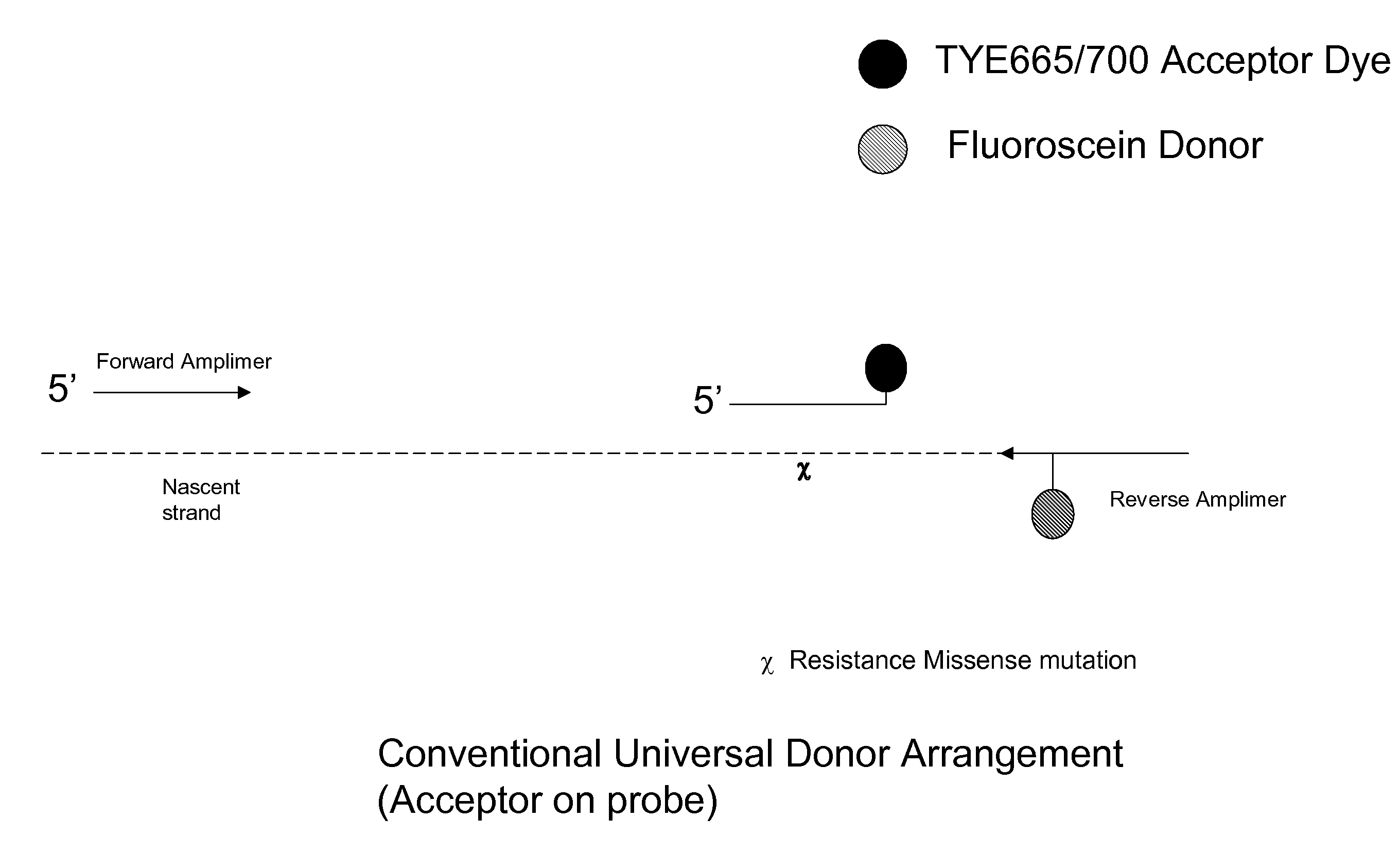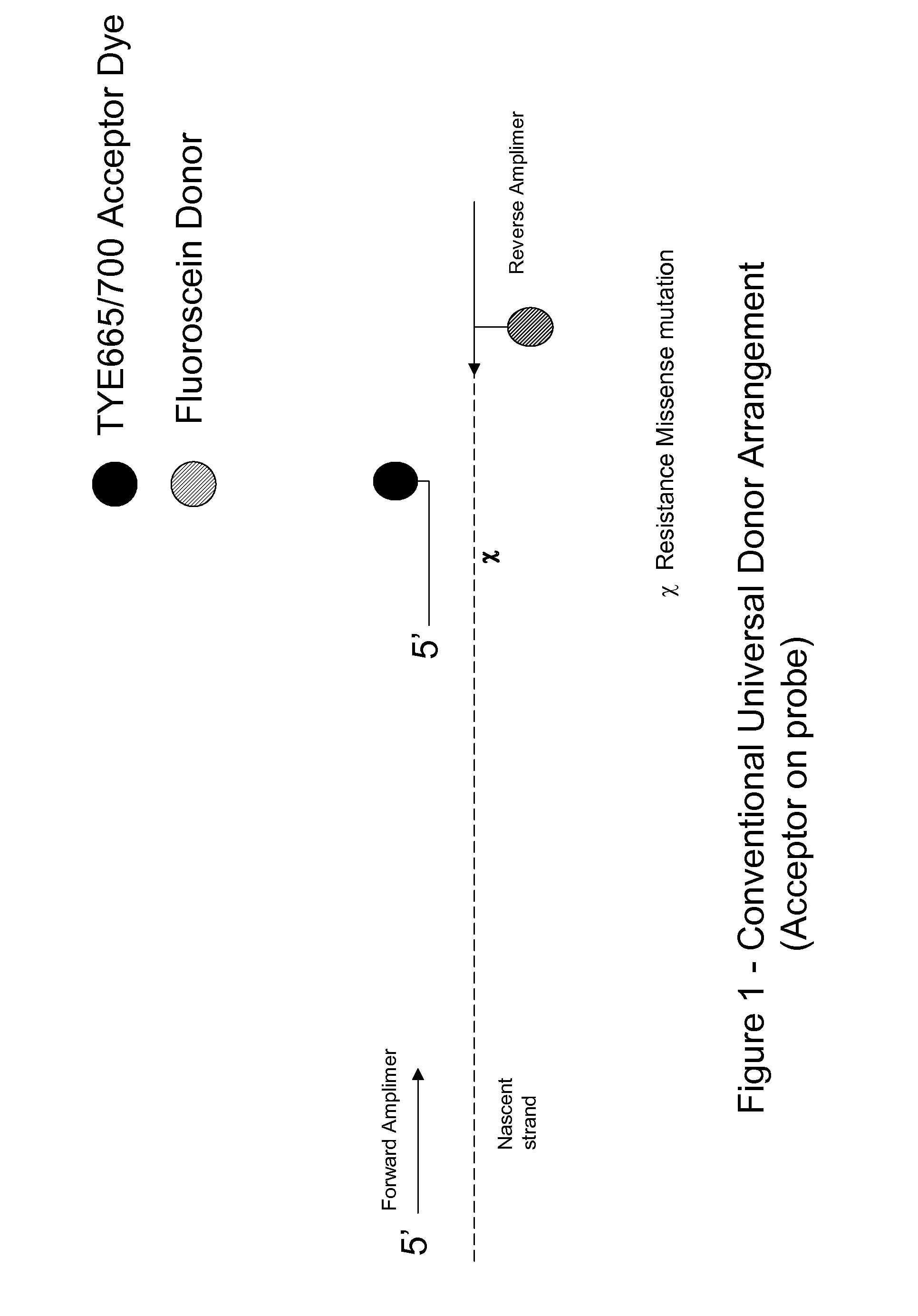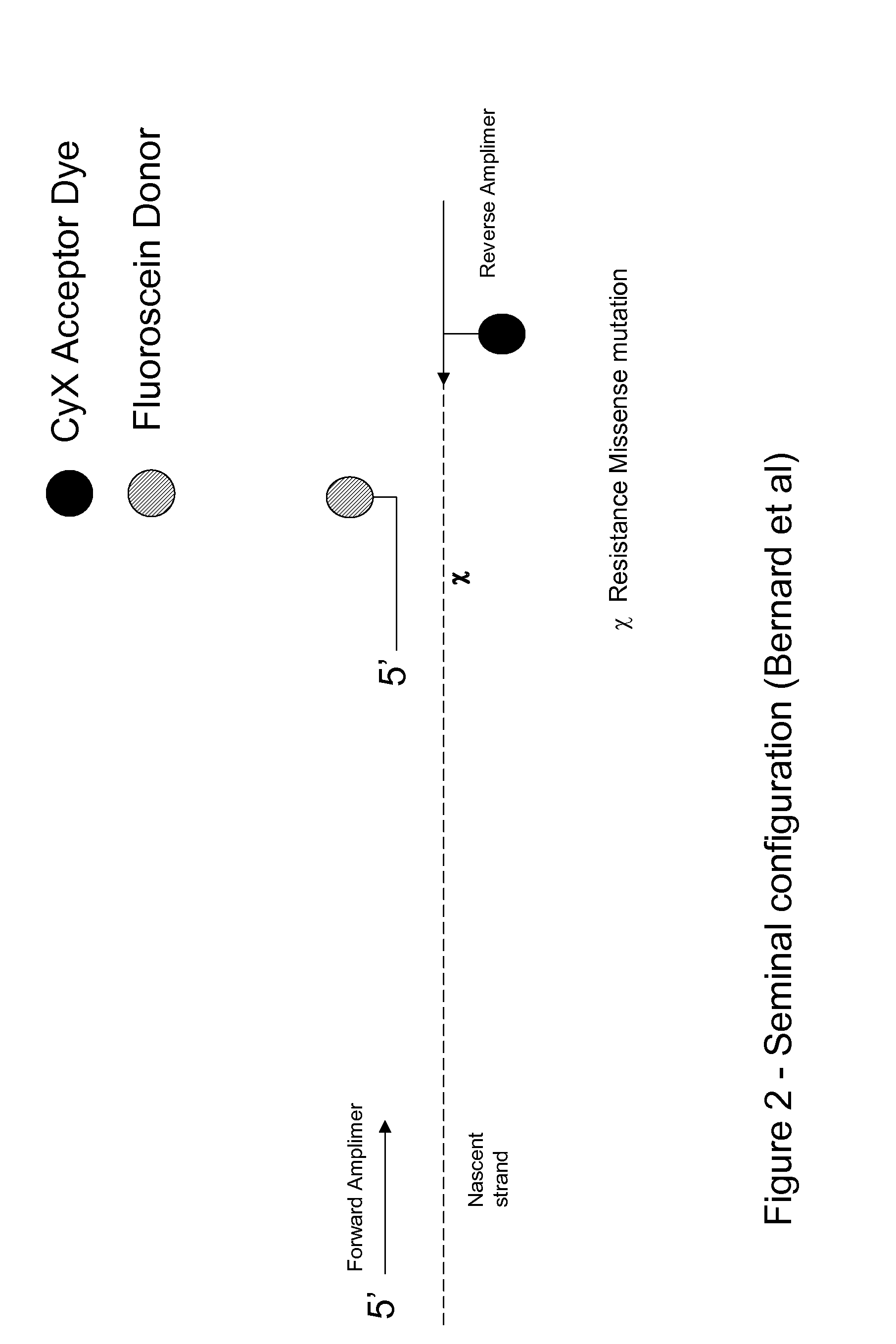Signalling system
a signaling system and nucleic acid technology, applied in biochemistry apparatus and processes, organic chemistry, sugar derivatives, etc., can solve the problems of affecting the detection accuracy of the signaling system, the change of the spectral emission, and the length of conserved sequences in the organism which can be used to design effective probes, etc., to reduce the risk of further transmission, inhibit the spread of the virus, and improve the effect of treatmen
- Summary
- Abstract
- Description
- Claims
- Application Information
AI Technical Summary
Benefits of technology
Problems solved by technology
Method used
Image
Examples
Embodiment Construction
[0068]Assay Design
[0069]Assay design and development was conducted using a super-consensus derived from H1N1 and H5N1 sequences which is shown in FIG. 9. In FIG. 9, the underlined sequences represent the forward and reverse primer regions. The probe regions are labelled in italics. The underlined codon “CAC” (within region bound by the probe TAMMLH5N1_H274Y) is that encoding the amino acid Histamine at position 274 in the neuraminidase protein. Alteration of this to TAT or TAC results in expression of Tyrosine at this position. The underlined codon “AAT” (within the region bound by the probe TAMMLH5N1_N294S) is that encoding the amino acid Asparagine at position 294. Alteration of this from AAT to TCT, TCC, TCA or TCG results in expression of Serine at this position.
[0070]The constructs below were synthesised and used as model templates to exemplify the method. “(rc)” in FIG. 9 denotes that the reverse complement oligonucleotide was used in the described experiments.
[0071]Wild Type ...
PUM
| Property | Measurement | Unit |
|---|---|---|
| Electric charge | aaaaa | aaaaa |
| Volume | aaaaa | aaaaa |
| Volume | aaaaa | aaaaa |
Abstract
Description
Claims
Application Information
 Login to View More
Login to View More - R&D
- Intellectual Property
- Life Sciences
- Materials
- Tech Scout
- Unparalleled Data Quality
- Higher Quality Content
- 60% Fewer Hallucinations
Browse by: Latest US Patents, China's latest patents, Technical Efficacy Thesaurus, Application Domain, Technology Topic, Popular Technical Reports.
© 2025 PatSnap. All rights reserved.Legal|Privacy policy|Modern Slavery Act Transparency Statement|Sitemap|About US| Contact US: help@patsnap.com



